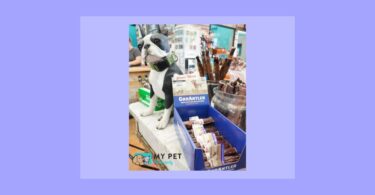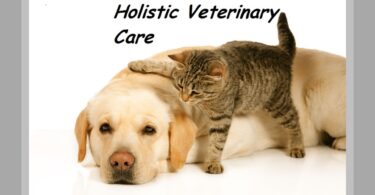Two cases of the same remedy to ponder over the question of whether there is such a thing as ‘veterinary homeopathy’.
I am Tizzy!
Tizzy was born in a cupboard, nobody had noticed that her mum was pregnant. Her mum was a rescued cat. Tizzy was the biggest of the three kittens. One of the smaller ones was euthanazed because of some deformity. It is strange that the owners did not notice that the queen was pregnant because they are attentive, knowledgeable and close to their animals.
When Tizzy was 2 years old her mum died in a car accident. Tizzy also was involved in a car accident but recovered well from her injuries.
She has problems with fleas and harvest mites (thrombidion*). She does not tolerate classical flea-treatment applications: she salivates and seems to stop breathing. She responds badly to chemical wormers as well.
As per usual, the rest of the case is in the original order and phrasing of the owner:
“She was a big fat kitten. Her brother is timid. Her mum was always a very friendly cat, always moulting like mad. You can talk to Tizzy.
She is always cuddling Betty, our dog. Betty is ok about this, she is nice to animals. Tizzy will greet us in a second. Betty gets the first greeting. Betty was her playmate when she was a kitten.
Tizzy is the supreme being; she has a big personality. She is so confident, we are all her slaves. I have never seen a cat so confident.
She eats little and often. If you don’t give her anything to eat when she demands food she is sick and will go and eat plants and other stuff. She has heart burn and needs to keep on eating. She will vomit liquid but as soon as she eats she is fine. She has to eat 5 times per day. This may be a possible consequence of having received too many medicines when she had her accident.
She has lots of friends amongst our neighbours in the surroundings. All winter she is in and all summer she is out.
She always eats the mice she catches.
When she has fleas, she scratches herself to bleeding. When I bathe her she is ok for 2-3 days. She is ok about being bathed: she is confident she is not going to drown.
She is easily indignated and then walks off. She demands that you are quite careful around her. You have to be gentle and respectful to her.
She has no road sense; she did not learn from the car accident. She is determined to go out across the road. She doesn’t care if you tell her off.
She is a cuddly cat, she is very friendly.
She is not worried about cars: ‘I am Tizzy, I am not worried. I also check you out when you are in my house.’
She became more friendly with us when her mum died. Her mother was very attentive to the kittens but often she used to pounce on them as if they were prey. It sometimes looked a very vicious game.
Tizzy gets annoyed if she does not get her own way.
She sits up high to talk with you. She gets comfort from sitting on your chest.”
Physically, there is nothing special about her. She is lean and shows the typical crusts on the back associated with flea problems and crusts around ears, between digits and on her ventrum associated with harvest mites.
Many of Tizzy’s features are very cat-like. What I find unusual is that her owner explains how bold she is and at the same time she wants to be treated with caution. This must hide some insecurity. We can also suspect that there must have been an issue with her mother: being pounded on by your mother as a kitten is not the ideal introduction into the world. That does not provide me with a remedy, but the remedy should be able to ‘explain’ this situation.
One thing is sure, Tizzy is confident:
Mind, Confident.
The description of her need to eat to improve her vomiting tendency is unusual.
Stomach, nausea, eating, amel
These two symptoms are covered by only one remedy (Synthesys 9.1): Lac Humanum.
One could ask the question whether giving human milk as a remedy for a cat makes sense.
Well, there are a few features in this case that remind me of what Tinus Smits wrote in Homeopathic Links (vol. 12, 5/99) about Lac Maternum. Of course I should not use information on Lac Maternum to prescribe Lac Humanum, but from the point of view of their origin there is not a great difference between the two substances. Lac Maternum is the milk of one woman and Lac Humanum is the collection of milk of several women at different lactation periods. Also, over the years, I have noticed that for very similar remedies (like in this case) some of their essence may be confused. I also did not dispose of a dynamic synthesis of Lac Humanum.
Especially, the following phrase in his article supported my prescription of the remedy: “This remedy helps the person to become aware of his own needs and of what he really wants for himself. This remedy helps the person to become aware of his own frontier and makes it possible for him to cleanse his own energy from what is ‘not him’.”
Maybe Tizzy was confused about her identity as a cat and therefore expressed rather caricature behaviour.
One dose of the remedy (Helios) in 200K changed the animal to become a normal cat. All the exaggerated features subsided. The itchiness initially increased for 2 weeks then to disappear quickly. Without being able to precisely describe what happened, the owner repeated to me on two occasions that Tizzy has changed so much for the better.
Although the remedy has not been put to the test of the following year’s harvest mite attack, the change in her being and the disappearance of the skin problems before the end of the harvest mite season, indicate that this was a good similimum.
*Harvest mites are the larvae of little red spiders that live in grass and fields in and around August when it is warm. Some animals (and people) react with an itchy dermatitis, particularly in skin-folds, where these larvae attach themselves to feed on lymph. Only a minority of animals and people seem to react to them. There are factors of allergy and individual sensitivity involved in the appearance of this very itchy condition.
Tinus Smits writes that Lac Maternum is associated with want of self esteem, anxiety about life, sadness, lack of joy, ineffectiveness. Similar symptoms are present in the pathogenesis of Lac Humanum. These characteristics are not really present with Tizzy. I put more weight in a possible causation: the experience of being pounded on by her mother, as if she were prey, can surely cause some ‘doubts’ about one’s existence/nature. Further she became more related to the dog who was her youth friend; could this have caused further confusion about her species/origin? Tizzy was not a settled individual, she seemed somewhat out of the picture. Opposite to this were the really frank behavioural streaks expressing: ‘I am Tizzy’.




